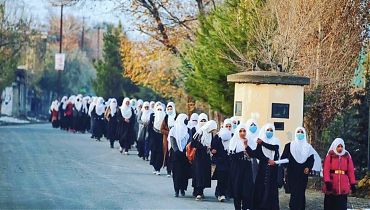
In recent years, Afghanistan has faced severe humanitarian and economic crises that have only worsened over time. One of the most pressing issues is hunger and malnutrition, which has escalated following the Taliban’s return to power in 2021 and the subsequent suspension of international aid. Since the fall of the previous government, humanitarian assistance to Afghanistan has primarily been channeled through international organizations without Taliban involvement. However, in recent years, Taliban-imposed restrictions on women, combined with political and economic challenges, have significantly reduced this aid.
Amid this situation, the U.S. decision to suspend financial assistance to Afghanistan in 2024 has sparked widespread concerns about the country’s humanitarian condition. The Taliban’s Ministry of Economy announced that, as a result of this decision, the activities of 50 aid organizations—which were funded by the U.S. Agency for International Development (USAID)—have been halted. These organizations played a crucial role in providing healthcare, education, demining services, and other humanitarian support to vulnerable populations.
The United States, as the largest provider of international aid to Afghanistan, has declared that all foreign humanitarian assistance, including aid to Afghanistan, will be suspended. This policy, enacted during Donald Trump’s presidency, has had an immediate and profound impact on Afghanistan’s population. While U.S. officials have assured that “lifesaving” and “food assistance” would be exempt from this suspension, it remains unclear whether Afghanistan will still qualify for these exceptions.
According to Xiao-Wei Li, Director of the World Food Program (WFP) in Afghanistan, the reduction in international aid has already left nearly half of Afghanistan’s 15 million people in need without access to food assistance. This means that more than 6 million people will survive this winter with only one or two limited meals a day, such as bread and tea. This worsening crisis not only exacerbates hunger but also threatens the overall health of millions.
Beyond hunger, malnutrition has become one of Afghanistan’s most critical health challenges. According to a report from the United Nations Office for the Coordination of Humanitarian Affairs (OCHA), it is projected that by 2025, 3.5 million children under the age of five in Afghanistan will suffer from acute malnutrition. Over the past five years, three million Afghan children under five have already endured severe malnutrition. Such conditions will have irreversible consequences for future generations in Afghanistan.
This crisis extends beyond food and health concerns—it has also deeply affected Afghanistan’s economy. The decline in international aid has led to a devaluation of the national currency (Afghani) against the U.S. dollar, resulting in higher prices for essential goods and food supplies. To counteract these economic challenges, the Taliban administration has sold U.S. dollars in the open market and attempted to regulate prices on essential commodities.
According to United Nations estimates, by 2025, more than 22.9 million people in Afghanistan will require humanitarian aid, with at least 15 million people struggling to secure their next meal. These figures indicate that Afghanistan’s humanitarian crisis has reached a critical tipping point, demanding urgent international intervention.
Given these circumstances, the continuation of humanitarian aid from international organizations and donor countries is more critical than ever. Further reductions or suspensions of aid could have devastating consequences for the Afghan people, leading to increased poverty, malnutrition, and higher mortality rates. Special attention to women and children—who suffer the most from this crisis—is essential to prevent a total humanitarian collapse and to save millions of lives.




